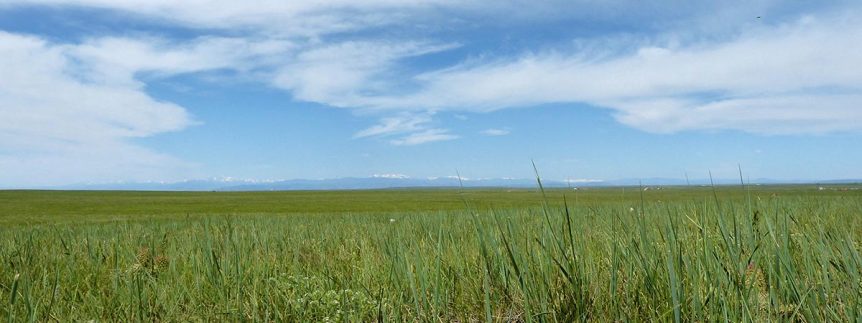Read the Transcript
Our discussion of managed grazing continues this week with a look at Managed Intensive Grazing. Deborah Clark and her husband Emry Birdwell apply the principles of holistic ranch management, and use managed intensive grazing on their stocker cattle operation on 14,000 acres in north-central Texas. The Birdwell and Clark Ranch at Henrietta Texas, features tallgrass prairie, river bottoms and brushy draws. Clark and Birdwell sold their farm 90 miles south in Palo Pinto County about ten years ago, after they fell in love with the landscape on this property.
“One of our daughters congratulated us on going into retirement, and we just looked at her and said, ‘Retirement?! We bet the farm!’ Literally, we bet the farm on this investment. Our goal was that we would pay for the ranch out of the proceeds of the cattle operation.”
Clark and Birdwell are putting into practice some of the latest and most progressive thinking on their grassland — practices that are good for their livestock operation and provide wildlife habitat. Deborah says her husband was introduced to holistic management decades ago.
“He took all of the original holistic management courses and workshops, and has practiced holistically since the 80s. He likes to say that he made all of the mistakes that every wide-eyed person does when they get into holistic.”
Even though she’d been married to Emry for years, Deborah says she didn’t know anything about ranching until they bought this ranch.
“I started going not only to holistic management courses but to a lot of wildlife workshops.”
They use a managed intensive grazing system. Some people call this “mob” grazing. They’re running a herd of 5,800 head of steers.
“We’ll move them anywhere from four to six times a day. There are about 125 paddocks that average in size anywhere from about 45 acres to about 125 acres. We’re just constantly looking at what’s in front of us and what we’ve left behind.”
Just imagine…5,800 steers grazing a 45-acre pasture. No wonder some call this “mob” grazing. On first glance, that might sound like a horrible way to treat grassland. But proponents of this style of grazing talk about the term “disturbance.” This disturbance of the pasture really contributes to the pasture’s health.
“Imagine the dung and the urine that those cattle are putting back on a small piece of land. So, you’re putting those nutrients back into the land instead of it being disbursed over a whole wide area. And then, with all the hoof action, as they grind the grasses and the forbs back into the ground you are creating a soil health that is beneficial.”
This disturbance is something southeast Colorado rancher Grady Grissom also told me about — a dense herd of cattle, trampling the grasses and forbs.
“Now you’ve got dead plant matter and contact with the ground where bacteria and fungi can break it down instead of standing up where the only breakdown process is oxidation. And, they’ve got all that manure in one place which jump starts the soil ecosystem. The bacteria and fungi and invertebrates, dung beetles and other bugs hit that location right behind that manure and invigorate the cycling into the soil.”
I was curious to know how long Deborah and Emry rest a paddock after that mob moves on, and Deborah says it depends on the season.
“In the fast-growing season, the average is about 60 days. From July to October, it’s 90 to 120 days. Last year, the average rest for any given paddock was about 115 days. Animal impact and rest is what’s key to this type of grazing. We want good, healthy rangeland conditions so that we can provide maximum weight-gain for our cattle that still leaves us with good rangeland conditions, and, in the process, we’re seeing that there are beneficial impacts for our wildlife.”
Playa Country, which ended in late 2016, was a weekly show that featured conservation and wildlife experts — as well as farmers, ranchers and land managers — talking about conservation practices that improve wildlife habitat and landowners’ bottom-line. This episode was made possible by a grant from the Dixon Water Foundation. Originally broadcast in February 2014.

